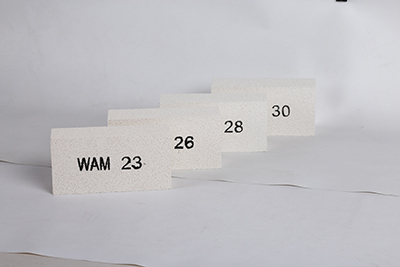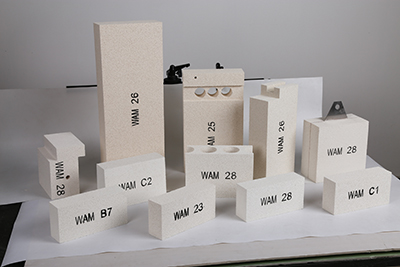The Best Solution For Your Specific Needs
The Best Solution For Your Specific Needs
 Tel: +86-532-85717690/85717352/85832089
Tel: +86-532-85717690/85717352/85832089 E-mail: wam@wamcn.net
E-mail: wam@wamcn.net
Refractory bricks, also known as shaped refractories, have high strength, simple construction, wide range of uses, and easy access to materials. They are suitable for the masonry of various industrial furnaces.
1. The physical and chemical indexes, allowable size deviations, and cross-section cracks of the shape products of ordinary refractory clay bricks should meet the specifications.
Ordinary refractory clay bricks are used for refractory masonry in general furnaces. The service temperature of lining material, furnace wall, furnace bottom, flue, etc. is below 1250℃. The combustion chamber is allowed to be used above 1400°C.
2. The physical and chemical indicators, product dimensions, allowable deviations, etc. of high alumina bricks should meet the specifications. High-alumina bricks are used in areas with high temperature resistance and wear resistance of general furnaces or masonry with heavy load, burner bricks and masonry with special requirements. The dome of the high temperature zone of the combustion chamber allows the use temperature of 1300~1650℃.


3. The physical and chemical indicators of light clay bricks, the allowable deviation of product dimensions and the cross-sectional requirements of the shape products should meet the specifications. Lightweight refractory clay bricks are used as kiln linings that are not corroded by high-temperature slag and corrosive gases. Depending on the capacity, the service temperature is between 1150 and 1400°C.
4. The physical and chemical indexes and the allowable deviation of the external dimensions of the lightweight high-alumina bricks should meet the specifications. It can be used for heat-resistant linings whose working temperature is lower than 1350℃. It can also be used for masonry without high temperature melt erosion and erosion. It can be in direct contact with flame.
5. Generally, corundum bricks are suitable for lining the fire surface of heavy oil gasification furnaces with a working pressure below 3MPa, an important part of the lining of salty wastewater incinerators, and radiant burner bricks that work at high temperatures. Generally, the service temperature of corundum brick is below 1600~1670℃.
6. Low-silicon fused corundum is suitable for occasions with strong reducing atmosphere, high hydrogen content and high temperature water vapor. Such as the large-scale ammonia plant, the gas collector lining of the first-stage reformer and the bricks and high-temperature furnace lining of the second-stage reformer. The physical and chemical indexes and dimensional tolerances of low-silicon fused corundum bricks should meet the specifications. The use temperature of low silicon fused corundum is below 1600℃~1670℃.

7. Light-weight alumina products (such as lightweight corundum bricks) are used for heat-resistant and heat-insulating linings of high-temperature furnaces, and linings corroded by high-temperature and high-pressure water vapor, generally acting on non-fire-facing linings. The service temperature of alumina products is below 1400°C.
8. Silicon carbide refractory bricks have good thermal conductivity, good thermal stability, resistance to reducing atmospheres, and high strength. They are often used as heat-resistant and wear-resistant linings and require good thermal stability, thermal conductivity and anti-reducing atmospheres. Occasions. The service temperature of silicon carbide refractory products is below 1400~1600℃.
Is there anything else you don’t know about the purpose and temperature of refractory bricks? If so, you can contact us. If there is a need for the product, you can also visit our website.